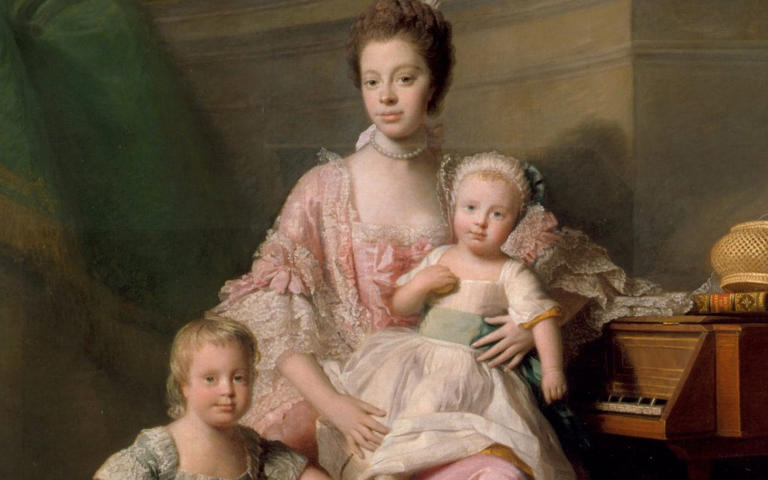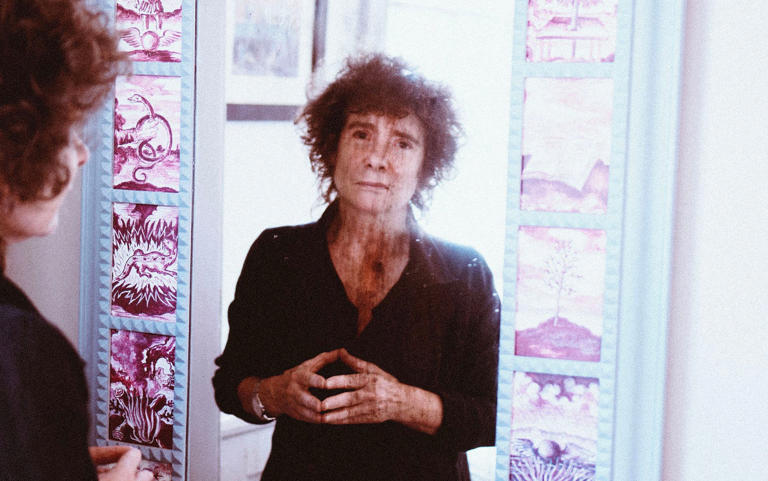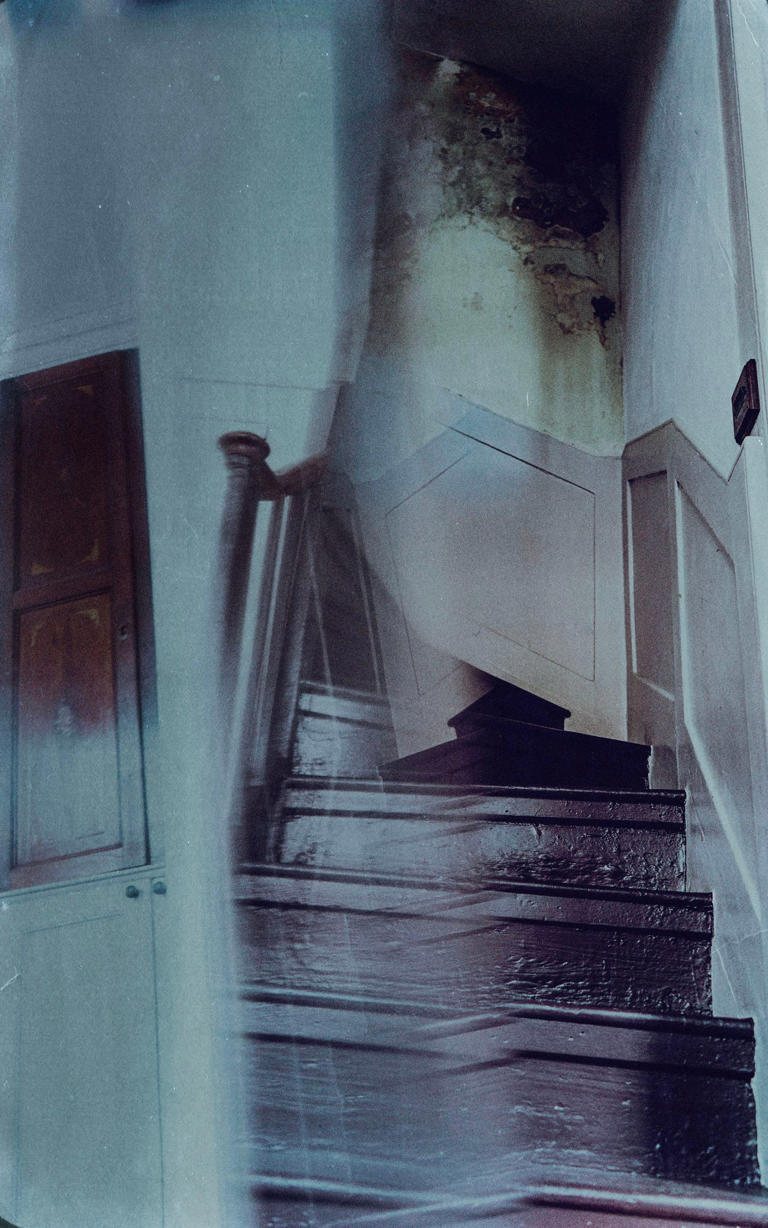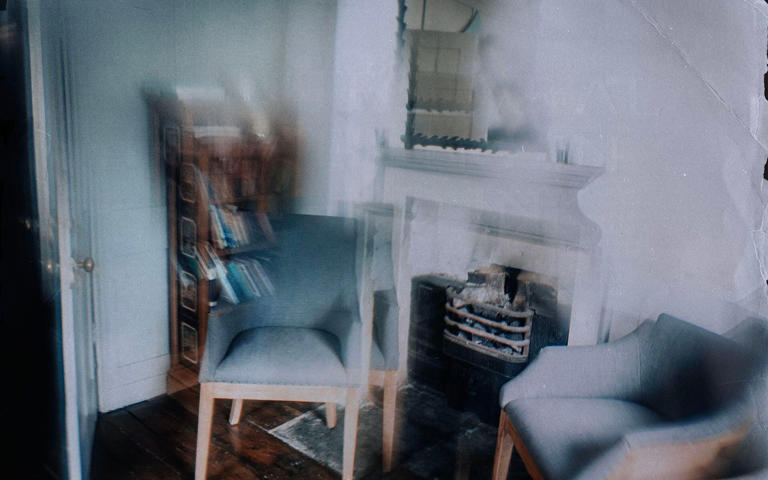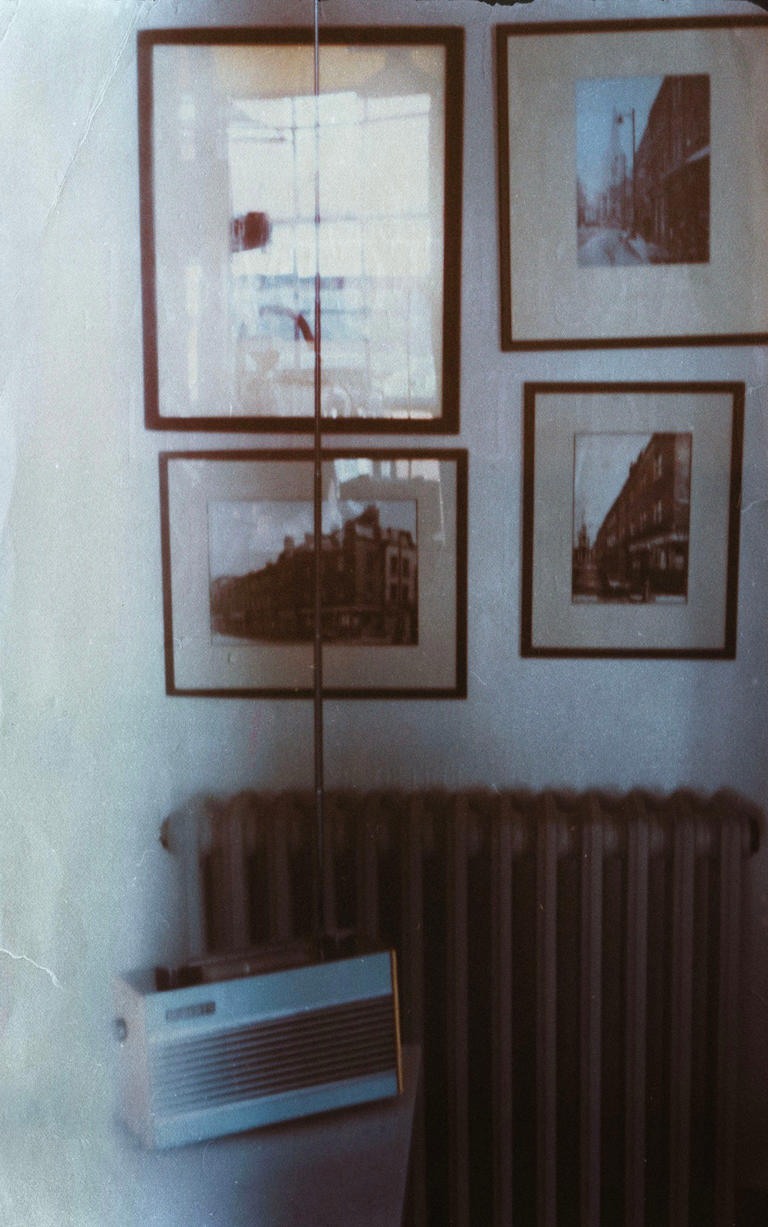FRENCH PALME D’OR WINNER LAURENT CANTET DIES AGED 63
















French Palme d’Or winner Laurent Cantet dies aged 63
French filmmaker Laurent Cantet, who won the Palme d'Or in Cannes in 2008 for his school-set film Entre Les Murs (The Class), died on Thursday aged 63.
"He died this morning in Paris of an illness," his agent Isabelle de la Patelliere told AFP.
The Class is based on the novel of the same name by François Bégaudeau and is a semi-autobiographical account of his experience as a teacher in Paris’ diverse 20th arrondissement of Paris. Bégaudeau also starred in the film. It is both moving and at times wonderfully humorous portrait of precious idealism in the classroom – and doubly impressive considering the improvisation by non-professional teenagers.
The Class received a unanimous vote for the Palme d’Or at Cannes, making it the first French film to do so since 1987. The movie also earned an Oscar nomination for Best International Feature.
The film was praised by then French president Nicolas Sarkozy, who said it depicted the difficulty of the French education system as well as the valiant efforts of teachers.
He returned to Cannes in 2017 with The Workshop, a film recounting a group of troubled youth attending a writing workshop near the southern city of Marseille.
His works tackled knotty issues within modern French society, always with deep humanity and empathy, something highlighted by the Cannes Film Festival, who bid farewell to "a fierce humanist, who sought light despite social violence and found hope despite the harshness of reality".
Cantet's other works include L'Emploi du Temps (Time Out), inspired by the real-life tale of a man who killed his parents, wife and children after pretending to be a successful doctor for two decades. It won two prizes at the 2001 Venice Film Festival.
His last work Arthur Rambo, released in 2021, explored how a reputation could be destroyed on social media.
The filmmaker had been working on a film called L'apprenti (The Apprentice) which was set for release next year.
Norman Lear obituary












Norman Lear obituary
Norman Lear, who has died aged 101, was the writer and producer of a series of hit shows, including All in the Family, Sanford and Son, Maude and The Jeffersons, that changed the face of American television. At a time of national division, Lear pulled in huge audiences with sitcoms that confronted controversial issues, but used traditional family humour, expanded to black families and single mothers, to illuminate both sides of a conflict, while holding people together. In 1977, he received a Peabody award for “giving us comedy with a social conscience”. That comedy dominated the 70s; All in the Family might draw a 60% share of the Saturday night audience; at times it and Sanford and Son ranked first and second in the ratings.
Lear’s two biggest hits were both adaptations of British shows. Sanford and Son moved Ray Galton and Alan Simpson’s sitcom Steptoe and Son to Los Angeles, with the black comedian Redd Foxx as the irascible junkyard owner. All in the Family reworked Johnny Speight’s Till Death Us Do Part; the East End of London became Queens, New York, with Carroll O’Connor’s Archie Bunker as Warren Mitchell’s Alf Garnett. Lear’s versions gained bite from issues such as the Vietnam war, race relations and terrorism; Archie’s solution to the risk of plane hijacking was to issue each passenger with a gun while boarding.
As a producer, Lear was a creative master at development. His ensemble casts developed strong characters, whose popularity saw them spun off into shows of their own; All in the Family alone spawned six more series.
Lear was born in New Haven, Connecticut. Both his parents, Jeanette (nee Seicol) and Hyman (known as Herman) Lear, were the children of Russian Jewish immigrants. Herman was a travelling salesman who went to jail for peddling fake bonds, and the family moved frequently. Norman finished high school in Hartford, Connecticut, and enrolled at Emerson College in Boston in 1940. He left to enlist in the Army Air Corps, and before shipping out in 1943 married Charlotte Rosen. In Italy, Lear flew 52 missions as a radio operator and gunner in a B-17 bomber.
Networks rejected All in the Family twice before its third pilot was bought by CBS in January 1971. It did not find an audience until it moved to Saturday nights, but still won an Emmy for best comedy series. Its second season went to the top of the ratings, where it stayed for five years. A spinoff, Maude, then hatched Good Times, the first sitcom with a black two-parent family; the next was The Jeffersons, which, like Maude, took a character from All in the Family. Lear developed One Day at a Time about a struggling single mother, and Diff’rent Strokes, in which a wealthy white man adopts two black kids. Even his flops were hits. Mary Hartman, Mary Hartman was a mock soap opera rejected by the networks that became a cult favourite in syndication, and spun off another cult hit, the small-town talkshow Fernwood Tonight.
An unrepentant liberal, Lear in 1980 founded People for the American Way, an advocacy group aimed at countering the rising power of the evangelical right. He produced I Love Liberty (1982), a rejoinder to conservatives who claimed the left was unpatriotic. In 2001 his purchase of one of the first published copies of the Declaration of Independence led to its exhibition on a national tour; Lear also produced a celebrity reading of it at Independence Hall in Philadelphia.
In the 80s, Lear bought Avco Embassy films. Rob Reiner, who played Meathead, Archie Bunker’s liberal son-in-law, was the son of Lear’s old comedian friend Carl; Avco produced Reiner’s first hit film, This Is Spinal Tap (1984). After selling Avco to Columbia Pictures, he formed Act III, which produced Reiner’s next hits, Stand By Me (1986) and The Princess Bride (1987). He remained active well into the new millennium, his work including writing and voicing for the animated South Park series.
President Bill Clinton awarded Lear the National Medal of the Arts in 1999. He received a Peabody lifetime achievement award in 2016, and a Kennedy Center award in 2017, though on that occasion he refused to attend President Donald Trump’s White House reception. Lear’s memoir, Even This I Get to Experience, appeared in 2014; two years later he was the subject of a documentary, Just Another Version of You.
Lear once put his original Peabody award into perspective. “We had a Judeo-Christian ethic hanging around a couple of thousand years that didn’t help erase racism at all. So the notion of a little half-hour comedy changing things is something I think is silly.”
His first two marriages ended in divorce; he is survived by his third wife, Lyn Davis, a psychologist, and their son, Benjamin, and daughters, Brianna and Madeline; two daughters, Kate and Maggie, from his second marriage, to Frances Loeb (who used part of her multimillion-dollar divorce settlement to found the monthly magazine Lear’s, “for the woman who wasn’t born yesterday”); and a daughter, Ellen, from his first marriage.
• Norman Milton Lear, writer and producer, born 27 July 1922; died 5 December 2023
QUEEN CHARLOTTE WAS ‘PERSON OF COLOUR’, MUSEUM CLAIMS IN LGBT GUIDE














Queen Charlotte was ‘person of colour’, museum claims in LGBT guide
Queen Charlotte was a “person of colour”, a museum’s LGBT audio guide has wrongly claimed.
The audio guide for the Royal Museums Greenwich tells visitors that despite what “insecure white boys” have said, George III’s wife was the first British royal from a non-white background.
Queen Charlotte’s purported ethnicity has been sidelined because of “structural racism”, according to the guide, which states that she was a “person of colour”.
While Queen Charlotte was depicted as mixed-race in the Netflix series Bridgerton, there is consensus among historians that she was white.
Inaccurate claims about her race are made in an LGBT-themed history trail of the Queen’s House in Greenwich, one of four sites under the control of the taxpayer-supported group Royal Museums Greenwich.
The history trail with its own online audio guide was created for Royal Museums Greenwich by Christian Adore, a self-declared “homosexual historian” seeking to share “deliciously gay stories” from the past.
“Yep, you heard me. The insecure white boys writing history conveniently forget to mention that bit, because… well, structural racism.”
This section of the guide refers to a large figurehead depicting Queen Charlotte, which was once attached to the royal yacht HMY Royal Charlotte, and which is now displayed in the Queen’s House in Greenwich, a former royal residence and naval hospital.
Queen Charlotte was born to a German princely dynasty in 1744, and married the future King George III in 1761.
Hit Netflix series Bridgerton depicted the queen as a mixed-race woman, and repeated the casting decision in the prequel, Queen Charlotte.
Claims about the race of Queen Charlotte hinge on one passage from the memoir of a German diplomat, who described the royal as being born looking like a “mulatto” or mixed-race person.
The diplomat, Baron Stockmar, was born 43 years after Queen Charlotte’s birth and would have had no knowledge of her appearance, which was never in her lifetime described as that of a mixed-race person.
‘A very gay tour’
The “Fierce Royals” guide promises a “a very gay tour” of the Queen’s House, which was given as a gift to Queen Anne by James I in 1636 as an apology for an argument.
The guide picks out the bisexuality of James I as one of its “deliciously gay stories”, and states that Charles II, known for his string of mistresses, had a “progressive, genuinely modern understanding of relationships in the 1660s”.
Royal Museums Greenwich has made efforts to reach a broader and more diverse audience in recent years, and new displays at its largest site, the Nation Maritime Museum, have reflected this strategy.
In one interactive display, a bust of Lord Nelson is berated by a “migrant goddess” figure, who tells heroic British admirals to “move over” to make room for “unsung heroes of the sea”.
The audiovisual display states that the “bravery and resilience” of Nelson, who was killed during the Battle of Trafalgar in 1805, is also shared by others, including migrants who make sea crossings.
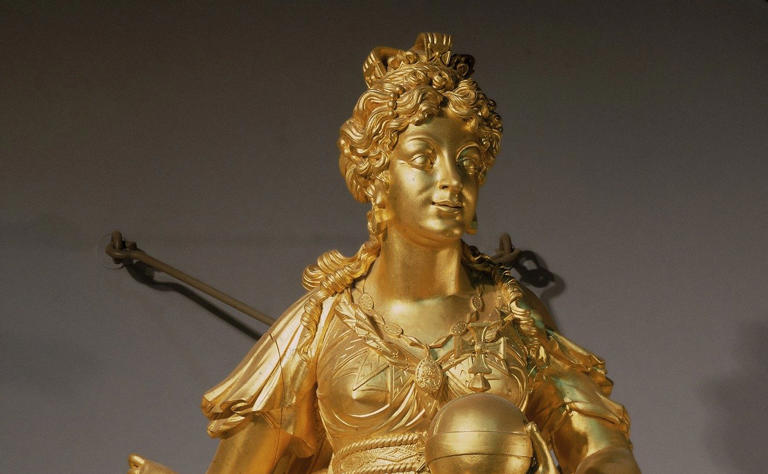
In 2021, it was revealed that the National Maritime Museum had disowned its slavery gallery, saying displays in its Atlantic exhibition “no longer reflect” its vision.
Royal Museums Greenwich, which receives government grants, has said that the guide was intended to be light-hearted.
A spokesman for the museum said: “The Fierce Royals pieces were performed in the Queen’s House, delivered by a number of performance artists, during LGBTQ+ History Month and part of an evening of light-hearted entertainment, and later added to our website for the enjoyment of those who could not come on the night.
“As part of the Fierce Queens event that the tour is based on, we had a black performer playing Queen Charlotte, which is why this segment was included in the tour.
“It was not written by or performed by members of RMG staff and as a performance piece, was not ‘fact checked’.”
Story by Craig Simpson: The Telegraph:
AN UNHOLY TRAFFIC: HOW THE SLAVE TRADE CONTINUED THROUGH THE US CIVIL WAR
![]()
![]()
![]()
![]()
![]()
![]()
![]()
![]()
![]()
![]()
![]()
![]()
![]()
An Unholy Traffic: how the slave trade continued through the US civil war
While the civil war is associated with the end of slavery in the US, the so-called peculiar institution survived throughout much of the Confederacy right to the end of the conflict. That’s the thought-provoking narrative of a comprehensive new book by Robert KD Colby, a history professor at the University of Mississippi.
“Many Confederates saw slavery as indelibly bound up with their bid for independence, and used the slave trade to try to build a world around an independent slaveholding republic,” Colby says.
In An Unholy Traffic: Slave Trading in the Civil War South, Colby cites a shocking statistic. Between 80% and 85% of people enslaved in the Confederacy on the eve of war in 1861 were still enslaved when Gen Robert E Lee surrendered in Virginia four years later. The number of Black people who were bought and sold over that span is estimated in the thousands.
And the Confederacy didn’t merely defend slavery within its borders.
“Essentially, anytime the Confederacy invaded a place where slavery was either more tenuous or people had fled from slavery, it absolutely took people back into slavery … many times, people who had not been enslaved at all,” Colby says.
Colby first came across hints of the overall story when he was a PhD student at the University of North Carolina, about a decade ago. That time period coincided with an outburst of scholarship on the domestic slave trade and capitalism. But while he admired such historians’ insights, Colby noticed that most such narratives ended with the civil war. This was understandable: slavery was tied to the cotton economy, which was destroyed by the war. Yet something prodded Colby to look into slavery during the war and what he found surprised him.
“I just found example after example, moment after moment, of people being bought and sold,” he says. “The more I read, it seemed to coalesce into broad themes,” including “how people experienced the civil war, how the slave trade shaped Confederate expectations of what their project was supposed to do, and how enslaved people pursued freedom during the war”.
As Colby explains, the slave trade underwent a reorientation. The antebellum practice was to sell enslaved people from the upper south to the lower south and the so-called “Cotton Kingdom”. Early in the war, this was no longer possible due to the Union capturing major markets such as New Orleans, Natchez and Memphis. Thus, enslaved people were sent to places where confidence in the south ran high.
The Confederate capital, Richmond, was prominent on that list, along with the original capital, Montgomery, Alabama. In another Alabama city, Mobile, slave traders advertised their heinous industry with an 1863 travel guide. Those engaged in the trade included major firms such as the Richmond-based Hill, Dickinson & Co and also ordinary citizens, such as an Alabama husband and wife, Nimrod and Queen Long, who debated selling an enslaved woman, Ellen, during a brief moment of Confederate military resurgence.
“For the most part,” Colby says, the trade “persisted in the places where the Union forces weren’t. It was squeezed into smaller and smaller areas. In those areas, it continued, for a variety of reasons.”
Where there were shortages of food, enslaved people might be sold to avoid “excessive mouths to feed”. When conscription into the army caused labor shortages, enslaved people could be acquired to “make up the difference”.
“Of course, plenty of people’s desire to continue buying and selling enslaved people was shaped by the degree of faith they had resting on the Confederacy. Confederates [bought] enslaved people almost as a bet on the prospect of Confederate victory.”
Colby addresses the grim narrative of women and children who Confederates anticipated would have a lifetime of labor and child rearing in a postwar nation. Colby sees the narrative of Kate Drumgoold as an example. When she was about eight, her enslaver in Virginia turned down what Drumgoold recalled as an unprecedented offer to sell her. But two of her 10 sisters were sold, as was their mother.
Despite the formidable apparatus of slavery, Black people found ways to resist, notably by escaping, as in the case of Mary Pope in Virginia. Pope’s husband, Joe Dardin, had been sent to slave traders early in the war. When her enslaver threatened to sell Pope and her four children too, the family fled to a Union camp for freedmen in the port of Norfolk. In Charleston, South Carolina, the hub of secession, William Summerson and his wife knew it was time to escape once they were appraised for sale. Hiding in barrels, they made their way to a Union gunboat.
“There was not one story of emancipation but thousands of smaller stories, thousands of individual stories of how people chose to pursue or chose not to pursue freedom during the war,” Colby says. “I hope the book speaks to just how complex the process of African American pursuit of freedom was during the civil war, and the magnitude of obstacles standing in the way – including and not limited to the threat of being captured and sold as they pursued their freedom.”
The Confederacy was not the only place where slavery existed during the war. It also existed in the loyal “border states” of Delaware, Maryland, Missouri and Kentucky. Here too there was a reorientation away from the lower south. Colby estimates that hundreds, perhaps thousands of enslaved people were sent from Missouri, which was rent by violence, to Kentucky, which was largely undisturbed in the final years of the war.
As the Union made deeper gains, the pace of emancipation accelerated. Colby documents the impact of Gen William T Sherman’s capture of Atlanta and march through Georgia in 1864. Union forces liberated enslaved people from jail; members of a coffle freed themselves from the traders Blount & Dawson. Yet the domestic slave trade continued into the war’s final moments.
Hill, Dickinson & Co made more than $1m from selling enslaved people between October and December 1864. A Virginia trader, Robert Lumpkin, attempted to bring 50 enslaved men, women and children out of Richmond in its last days as the Confederate capital. Lumpkin sought to transport the group for future sales, wherever Lee’s army might find refuge.
Colby chronicles the triumph of emancipation – and the future life of freedmen. Many sought to reunite with family members who had been sold into slavery. Sometimes they were aided by the newly established Freedmen’s Bureau. There were success stories: Kate Drumgoold vividly recalled a reunion with her mother. Others, however, issued calls for lost loved ones for decades after the war.
Colby notes that in attempting to reunite their families, formerly enslaved people sometimes sought help from the very people who might have once enslaved them: former slave traders.
Of the latter, he says, “Some were deeply spiteful and resentful of the way the war destroyed their business … [but] I found one or two who were actively helpful in the process of reuniting families. I think it speaks to, on the one hand, the opportunities that the end of the war and emancipation provided to formerly enslaved people, and also the limitations of this.”
JEANETTE WINTERSON: I DIDN’T BELIEVE IN GHOSTS… UNTIL I STARTED LIVING WITH THEM











Jeanette Winterson: I didn’t believe in ghosts… until I started living with them
Scroll through the article to watch Winterson telling her own ghost stories
I bought a small Georgian house, built in the 1780s – just before the French Revolution. The house is in an old part of London – so old that it lies outside the ancient city walls. Those walls are long gone. The house is still here. And so am I. For now.
I ask myself, when I am dead, would I haunt this house? I am fond of it, so perhaps a return would be permitted? And if I don’t approve of what the new people have done to it – I can create a disturbance.
The house, and others like it, was not built for anyone grand. This part of town was where poor people lived.
Jack the Ripper hunted around here – and later, the Kray twins, drinking at a pub that had a special licence to stay open all night.
Samuel Pepys, diarist of the Plague, chronicler of the Great Fire of London, wrote about Spitalfields – the name itself pointing backwards to the leper hospital in medieval times. That site became the vast fruit and veg market roaring into life at 4am every morning except Sunday. In fact, my own house used to belong to an oranges importer. There was really no choice but to buy it.
The market is gone now, relocated to make way for corporate offices and boutique shops. No wonder ghosts get upset.
My first ghost was unexpected.
It took me two years to make the house habitable. It had a Dangerous Structure Notice on it when I bought it. The front façade was propped, and the shopfront was bricked up, to stop the building collapsing. But inside, the fireplaces were all there, and most of the original panelling, and wide floorboards that I polished to a deep, satisfying shine.
My carpenter found the original shopfront panels wrapped in sacking in the basement – we put it all back – and the Listed Building status means that no one can take it away again. The ground floor and basement have a separate entrance – the first shop there opened in 1805, during the Napoleonic Wars, and I like it that we were selling onions the size of cannonballs back then.
The basement, though, was low and mean and had to be dug out by hand. Vibration would have brought the house down. Digging with pickaxes and shovels, the first thing we found was the skeleton of a dead cat with a charm round its foot. Cats were often buried alive in the footings of new buildings, to ward off… what?
The next thing we found was a walled-up vault. This vault was far older than the house. The bricks were slight, irregular, hand-made, crumbling with damp. It’s likely that this part of the building dates back to the 1600s, before the Plague and the Great Fire of London, and it might have been someone’s cesspit, or it might have been used to bury infected bodies. We weren’t going to find out by digging deeper.
The upper part of the vault – if you can imagine an upper part in a basement – would be useful for storage, the rest got a limecrete floor over it. Then, with a serviceable, solid door fitted into the recess, we forgot about it.
I fashioned a tiny bedroom and bathroom, down there in the basement – subterranean and silent, but carpeted and cosy, with the original prison-bar air grill on to the street over my head creating a light well, while the muffled noises of street life, above, were comforting. I like darkness and quiet for sleeping – so a basement is perfect.
In any case, good friends of mine needed to borrow the house itself while their own place was being renovated – and what did I need except a bed for the night?
On one such night, in one such bed, and deeply asleep, I was awakened by the sound of clattering footsteps coming down the wooden stairs into my room. Struggling from sleep, I called out, ‘Vicky?’ as my mind reached for the obvious: my friend from upstairs had come down for something.
There was no reply.
I lay still, listening. Nothing.
Then, just as I was about to fall back to sleep, I felt a hand take my hand – my hand that was outside of the bed covers, dangling down on the same side as the door to the vault. But wait, this wasn’t someone holding my hand; no, this was someone taking my pulse. Three fingers on my wrist. Cold fingers. And I don’t know why I did this, but I said, ‘I am alive.’
At that, the hand let go of my hand, there was a rush of air, and the sound of the same rapid footsteps, this time going back up the stairs.
In the morning I asked Vicky if she had come down in the night – a ridiculous idea, since it would have meant exiting on to the street from her quarters and re-entering through the separate door. She told me that she had heard banging from the ground floor occasionally but had assumed it was coming from next door.
Sound can be deceiving. Yes, it can, but not when it clatters down a staircase to take your pulse.
It was always my intention to restore the shop space and start trading from there again, and when my friends were able to go to their own home, that’s what I did.
Once the shop was bustle and busyness, there were no more basement disturbances. The ghosts moved upstairs. To me.
I want you to visualise a flight of steep, straight stairs leading up from the front door to the kitchen area, and a small, panelled dining room off it. Then, the stairs reappear between these rooms and take us, on a tight wind, to a set of rooms, one to the right and one to the left, with a little room in between that would have been the slop room for the two families living either side. Above these rooms is the attic where I sleep now. Bathrooms were a much later (1950s) addition, built in a tower in the backyard.
It is the second floor that concerns us – and in particular, the corner room with its double aspect. The corner room would have been the more desirable accommodation when the house was a rooming house. To begin with, I developed the distinct impression that I was not alone in that room.
When I sat down by the fire to read, I was convinced that the chair opposite me was occupied. This was not unpleasant, but it was strange. The personage, I thought, was female. Walk into the room, and it seemed empty, in the expectant way that rooms can be empty, as if they are waiting for you to join them. Sit down, settle down, and within a half-hour or so you would not be alone.
A friend of mine came to stay while I was away. When I returned, she asked me, a little awkwardly, if I had noticed anything unusual in the parlour. I said nothing – a sure way to get someone to say more – and she confessed that she had seen a woman in a grey dress.
That was more than I had seen, but I have never ‘seen’ a ghost, only felt their emphatic presence. I do want to stress this; there is no vagueness about it. Ghosts are intangible but they are not vague.
Over the years – and we are talking 30 years or so now – my ghosts have come and gone. I rented the house to a cheerful, no-nonsense New Yorker called Lisa for a while, and she was not haunted – or if she was, she dealt with it.
When Lisa left, I returned the house to the spartan state that suits me – no clutter, a few simple pieces of good furniture. It’s a luxury only possible when you don’t live in a place all the time, or with kids or cats. Or dogs. The cats and dogs and God knows what in my other home make any haunting impossible. There’s too damn much going on.
Ghosts seem to like a quiet life – at least for themselves. Spitalfields is ghost-friendly. The place is low-lit at night, there are always candles, and I had the fireplace grates fitted with flame gas fires. So, in the evening, in the winter, the wood panelling glows, and the floorboards shine, and there is no TV, only the quiet sound of me and a book.
The corner room soon became occupied – this time by a noisy and cross male, who banged the fire-irons, opened and shut the door, fiddled with the lights, and unforgivably, stomped up to the attic to sit heavily on my bed. I hate to be disturbed at night.
Only the other evening – just before I finished writing this – I was staying at the house when there was a terrific thump on the bed headboard followed by a tremendous racket in the corner room. I shouted at whoever it is – pointing out that I needed to get a good night’s sleep. The entity retreated into sulky silence.
I don’t know if you have experienced a ghost sulking – it’s like a child trying to be quiet while doing everything to get your attention.
These days, when I enter or leave the house, I greet the ghosts cheerfully, welcoming them, requesting that they behave well – they are my tenants, after all. I understand that they prefer to be out and about at night – but I ask that they do so without involving me. The radio still switches itself on in the kitchen from time to time – but not before 8am, which is decent of them. Ghosts, it seems, are delighted with electricity. Certainly, they manipulate it – lights going on and off, and the radio stunt is a classic.
And once, just once, I had the oddest experience.
It was soon after my dear friend, the writer Ruth Rendell had died. Ruth herself came to believe in ghosts, late in life, after an unpleasant experience in a Cuban hotel – after that she took the line that it is buildings themselves that trap and release the energy, rather than that ghosts ‘visit’. I was thinking about Ruth, sadly, as I was waiting for my laptop to get itself together. For a single second Ruth’s smiling face flashed across the screen.
It was a photograph – and I have that photograph – so yes, it is in the computer – but I hadn’t been looking at it, nor had I searched for it, or done anything at all that might have made it appear out of its folder.
I never felt Ruth’s presence again after that, though many times I walked past her house in London, after her son sold it, and I wondered if she was there.
Standing outside her place, I longed for her to open the door, as she used to do, country music playing in the background. Her big smile. It was that big smile I saw on my screen.
I realised later that the appearance was within the 40-day mourning period observed by different faiths and cultures – Islam, Roman Catholic, Eastern Orthodox – with Jews it is 30 days. Perhaps, that’s some sense of the time it takes for a soul truly to depart this place. Death, after all, is an eviction. But what about the ghosts with whom I have no direct relationship? The ghosts in my London house?
Maybe Ruth is right, and the house-ghosts are contained by, and released by, the building itself, and after a time they disappear for ever. There are no explanations in the real sense of that word. We just don’t know.
All the ghost-hunting TV shows, with their measuring kits and resident psychics, they tell us no more than we can know ourselves, via our own senses. I don’t understand it, I am not sure that I believe it, but I go on experiencing it. I doubt I have heard the last of my ghosts…
Abridged extract from Night Side of the River: Ghost Stories, by Jeanette Winterson, a collection of short stories, interspersed with the author’s own encounters with the supernatural ( from which these experiences are taken).Out on 5 October (£18.99, Vintage); pre-order your copy from books.telegraph.co.uk
Articles - Latest
- FRENCH PALME D’OR WINNER LAURENT CANTET DIES AGED 63
- Norman Lear obituary
- AN UNHOLY TRAFFIC: HOW THE SLAVE TRADE CONTINUED THROUGH THE US CIVIL WAR
- QUEEN CHARLOTTE WAS ‘PERSON OF COLOUR’, MUSEUM CLAIMS IN LGBT GUIDE
- JEANETTE WINTERSON: I DIDN’T BELIEVE IN GHOSTS… UNTIL I STARTED LIVING WITH THEM
- ANCIENT HUMAN ACTIVITY DISCOVERED IN KILOMETER-LONG LAVA CAVE
- DNA ANALYSIS SPANNING 9 GENERATIONS OF PEOPLE REVEALS MARRIAGE PRACTICES OF MYSTERIOUS WARRIOR CULTURE
- LOST CITIES HIDDEN FOR THOUSANDS OF YEARS DISCOVERED UNDER FOREST
- LETTER: ALAN ARKIN OBITUARY
- ARCHAEOLOGISTS CRACK MYSTERY OF ANCIENT MAYA AFTER 7,000-YEAR-OLD REMAINS FOUND
- NEW JERSEY REP. DONALD PAYNE JR. DEAD AT 65
- WORLD'S TALLEST WOMAN' MARIA FELICIANA DOS SANTOS, 7FT3, DIES AGED 77
- UNDERWORLD DISCOVERY CHALLENGES OUR UNDERSTANDING OF HUMAN EVOLUTION
- MUSLIM SOLDIER MEMORIAL FUND £1 MILLION TO IMPROVE RELATIONS AFTER ISLAMOPHOBIA ISSUES
- SCIENTISTS DISCOVER 1ST-OF-ITS-KIND CELL PART BORN FROM A SWALLOWED MICROBE
- NYC TIKTOK STAR EVA EVANS DIES AGED 29
- LADY GARDNER OF PARKES, CONSERVATIVE PEER WHO CHAMPIONED WOMEN’S RIGHTS IN THE EU AND UN – OBITUARY
- WEBB TELESCOPE DETECTS LIGHT FROM AN EARTH-LIKE PLANET
- FORMER LABOUR MINISTER AND CROSSBENCH PEER FRANK FIELD DIES AGED 81
- LOURDES PORTILLO DEAD AT 80:OSCAR-NOMINATED FILM DIRECTOR HAS PASSED AWAY
- VAMPIRE' NEUTRON STAR BLASTS ARE RELATED TO JETS TRAVELING AT NEAR-LIGHT SPEEDS
- THE MOON IS 40 MILLION YEARS OLDER — EXPLAINED
- BARBARA O.JONES DEAD AT 82: ACTRESS WHO STARRED ALONGSIDE MUHAMMAD ALI IN TV SERIES, HAS PASSED AWAY
Articles - Most Read
- Main
- Contact Us
- The science behind Ouija boards
- Cosmic Consciousness - What is Cosmic Consciousness-2
- Cosmic Consciousness-Introduction
- Cosmic Consciousness - Introduction-2
- MASSIVE 6.1 MAGNITUDE EARTHQUAKE HITS NEW ZEALAND AS NATION STILL REELING FROM CYCLONE
- ARCHAEOLOGISTS UNRAVEL THE TRUTH OF APHRODITE, GODDESS OF LOVE, ON VALENTINE'S DAY
- The Human Condition-Thomas Keating
- Cosmic Consciousness First Words - 1V - 2
- Cosmic Consciousness First Words - V -
- Cosmic Consciousness V - 2
- Cosmic consciousness - First Words - IV
- Cosmic Consciousness - What is Cosmic Consciousness?
- Evolution and Devolution-Chapter 2
- The Human Condition - Thomas keating-3
- The Human Condition-2-Thomas Keating
- Drinking From The Mountain Stream - Milarepa
- Cosmic Consciousness-On the Plane of Self Consciousness
- The Human Condition - 4
- Cosmic Consciousness - 3 - On the Plane of Self Consciousness
- Evolution and Devolution-Chapter 1
- The Human Condition - 6
- Shakyamuni Buddha or India the 1st “Black Revolutionary Hero.”
- On the Plane of Self Consciousness - 2
- Milarepa's World
- The Human Condition - 5
- Milarepa's World-2
- The Buddhist System of Liberation
- Contemplation and the Divine Therapy - 2
- On the Plane of Self Consciousness IV
- The Buddhist System of Liberation - 2
- JERRY RAWLINGS, GHANAIAN STRONG MAN WHO CAME TO POWER IN A COUP BUT INTRODUCED DEMOCRACY – OBITUARY
- On the Plane of Self Consciousness IV - 2




